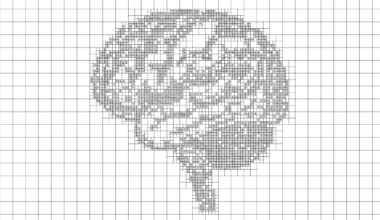Understanding Cultural Differences in Conflict and De-escalation
In our increasingly interconnected world, understanding cultural differences in conflict resolution is essential. Each culture has its unique perspectives and approaches, significantly influencing how conflicts are perceived and resolved. Awareness of these differences can provide insights into de-escalation techniques suitable for diverse environments. Many cultures prioritize collective well-being over individual rights, which may affect conflict responses. Others emphasize direct communication styles, whereas some may prefer subtlety. Recognizing these modalities allows for tailored de-escalation methods. Specific de-escalation strategies may resonate differently depending on cultural backgrounds, making them vital for professionals in counseling, law enforcement, or negotiation. Incorporating this knowledge can prevent misunderstandings and initiate productive dialogues. Effective negotiations involve understanding not only the issues at stake but also the cultural narratives that shape perceptions. This cultural intelligence enhances relationships and fosters peace in various settings. Thus, learning about cultural dimensions in conflicts promotes empathy, effective management, and solutions that respect diverse values. The journey towards masterful de-escalation begins with education and openness to understanding multifaceted human interactions in the context of differing cultural backgrounds.
This understanding plays a crucial role in self-defense training and conflict resolution. By incorporating cultural sensitivity in interactions, conflicts often reach commendable conclusions. Heightened awareness of varying communication styles often assists in diffusing potentially hazardous situations. Training programs must emphasize cultural variability in responses to confrontation and escalation. When participants learn to identify such differences, they can adjust their strategies in real time. Customized training modules focusing on particular culture-related behaviors enhance overall effectiveness. Such insights can also improve professionals’ ability to strike the right balance between assertiveness and cooperation. Recognizing these dynamics leads to calmer negotiations and peaceful resolutions during conflicts. Empathy cultivated through education about various heritages permits individuals to engage in more productive conversations. This allows for the establishment of trust among parties involved. Successfully incorporating these elements into training results in participants better equipped for conflict and de-escalation situations. Furthermore, cultural competence serves as a foundation for a more comprehensive approach, blending traditional fighting techniques with softer skills. Therefore, self-defense training programs should seriously consider integrating these vital elements into their curricula to boost overall effectiveness.
The Role of Communication Styles
Effective communication is critical in resolving conflicts across cultural contexts. Different cultures have varied communication styles—some are direct, while others may lean towards indirect forms. Understanding these styles is crucial for effective de-escalation, as misinterpretation often leads to exacerbated conflicts. In high-context cultures, non-verbal cues play an essential role, where gestures, tone, and presence convey significant meaning beyond mere words. Conversely, low-context cultures rely on explicit verbal communication, where clarity may be prioritized. When conflicts arise, recognizing these communication modes offers essential insights for conflict resolution. For instance, people from indirect communication cultures may perceive directness as aggression, while those from direct backgrounds may interpret indirectness as evasiveness. Bridging these gaps involves adapting communication strategies, where active listening and observation become paramount. Engaging in reflective dialogue ensures all parties feel respected, reducing the potential for escalation. Moreover, enhancing de-escalation strategies requires flexible communication techniques catering to different cultural backgrounds. This adaptability ultimately leads to mutually beneficial solutions, fostering cooperation and understanding among diverse groups. Emphasizing communication’s role in conflict enhances prospects for productive outcomes and shared understanding.
Moreover, it’s essential to acknowledge potential cultural biases that may influence conflict encounters. Recognizing personal biases shapes educators, trainers, or negotiators’ responses in conflict scenarios. These biases can cloud judgment and lead to misinterpretations of actions stemming from cultural differences rather than personal hostility. Such awareness is necessary for neutralizing tensions between conflicting parties. Introspection and training help individuals identify their biases, aiding in creating opportunities for empathy. Prioritizing awareness of biases invites participants to engage in self-reflection concerning their own cultural beliefs and norms. Furthermore, discussions surrounding cultural narratives kindle deeper understanding among training participants, enhancing overall emotional intelligence. Trainings on bias reduction tactics should integrate cultural education as a core component, increasing participants’ effectiveness in self-defense scenarios. Practically, professionals involved in conflict resolution can incorporate role-plays simulating diverse cultural encounters, promoting empathy and understanding during training sessions. Exercises like these help identify and dismantle stereotypical views and assumptions regarding certain groups. By blending bias awareness with skill enhancement in de-escalation, conflicts may be handled with more sensitivity and awareness, ultimately yielding more satisfactory resolutions in multifaceted environments.
Adaptability in Conflict Resolution
Adaptability emerges as another cornerstone in understanding how to effectively manage conflict and de-escalation. Each conflict scenario carries distinct cultural dynamics that require flexible approaches tailored to individual circumstances. Like other competencies, adaptability can be honed over time with practice and experience. This capability empowers participants to assess situations on a case-by-case basis, leading to more appropriate strategies. For example, the understanding that not all cultures respond favorably to aggressive advocacy can significantly shape responses to conflicts involving multiple parties. Cultivating adaptive techniques entails experimenting with various methods, honing negotiation skills, and learning from each encounter. This iterative process involves acknowledging that there may not be a single, effective solution applicable to all individuals or situations. Therefore, training should provide participants with a diverse toolkit of de-escalation techniques anchored in varied cultural strategies. Furthermore, culturally adaptive conflict resolution enhances participants’ critical thinking skills, allowing them to navigate complex situations strategically. The more adept individuals become at sifting through cultural nuances, the greater peace and understanding they can foster during conflicts, ultimately enhancing social interaction within communities.
Furthermore, solutions in conflict resolution must consider the emotional nuances involved in cultural interactions. Especially in multicultural conferences or individuals interacting within diverse teams, emotions often play a pivotal role in conflict escalation. Emotions are frequently filtered through cultural lenses, further altering the perception of a scenario. Training should emphasize emotional intelligence, guiding participants in recognizing and validating emotions as part of the de-escalation process. Encouraging empathy permits individuals to appreciate others’ emotional states, creating avenues for collaboration. Moreover, training tailored to highlight emotional expressions across cultures can significantly improve participants’ capabilities to create effective, respectful dialogues. Knowledge of how familiar or unfamiliar cultural contexts affect emotional responses facilitates proactive strategies to mitigate potential threats during conflicts. Providing increased cultural exposure by introducing role-plays or real-world case studies demonstrates the importance of emotion recognition. Promoting an emotionally aware atmosphere fosters positivity and understanding among conflicting parties. In this regard, focusing on emotional and cultural dynamics fundamentally shapes conflict resolutions, ensuring that solutions are sensitive, sustainable, and constructive while preserving the self-respect of all parties involved in the dialogue. Ultimately, valuing emotion enhances every aspect of the de-escalation process significantly.
Conclusion and Forward Steps
In conclusion, effectively addressing cultural differences in conflict resolution requires an all-encompassing approach that blends multiple elements. Awareness, diverse communication styles, biases, adaptability, and emotional intelligence are interconnected components essential for successful resolution strategies. The importance of training in these areas cannot be emphasized enough, ensuring participants receive comprehensive knowledge regarding cultural aspects that shape conflict and de-escalation. Professionals engaged in self-defense training should prioritize incorporating these key elements into their curricula to elevate the effectiveness of teaching methods. Furthermore, workshops and seminars focusing on cultural competence can enhance practitioners’ abilities in situations where conflicts may arise. Ultimately, fostering collaboration between cultures ensures not only more amicable resolutions but also empowers communities to engage respectfully and constructively. As interactions among diverse cultures increase globally, equipping individuals with the tools to navigate these complexities will remain crucial. Continuous learning and openness to various perspectives are fundamental in establishing respectful relationships while seeking constructive conflict resolutions. The road to effective de-escalation encompasses acknowledging and embracing differences while cultivating a shared understanding, paving the way toward a more peaceful coexistence.
Lastly, it is imperative to highlight that cultural competence in conflict resolution extends beyond mere training or workshops. To be truly effective, individuals must immerse themselves in different cultures, fostering genuine relationships that transcend superficial understanding. Active engagement provides firsthand experiences, contributing to deeper awareness and insight of varied norms. This ongoing learning process fosters resilience and adaptability when faced with conflicts. Furthermore, creating safe spaces for dialogues amplifies these connections, welcoming participants to share personal stories, thus enriching mutual understanding. Facilitators of conflict resolution should endeavor to create environments where sharing cultural narratives becomes commonplace. By doing so, they help diminish biases and prejudices ingrained in societal narratives. A culture of continuous learning helps build healthier relationships not only in professional arenas but within home and community contexts. Additionally, engaging with local community leaders and experts can strengthen the dialogue around conflict and resolution. These relationships open avenues to address local issues proactively, illustrate cultural complexities, and foster community-wide understanding. Whether working in professional spheres or personal lives, embracing cultural differences propels individuals toward collaborative, respectful partnerships capable of managing conflicts efficiently for long-term peace.


